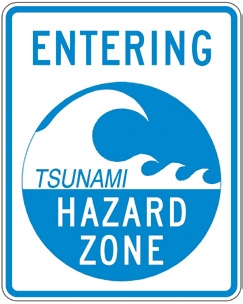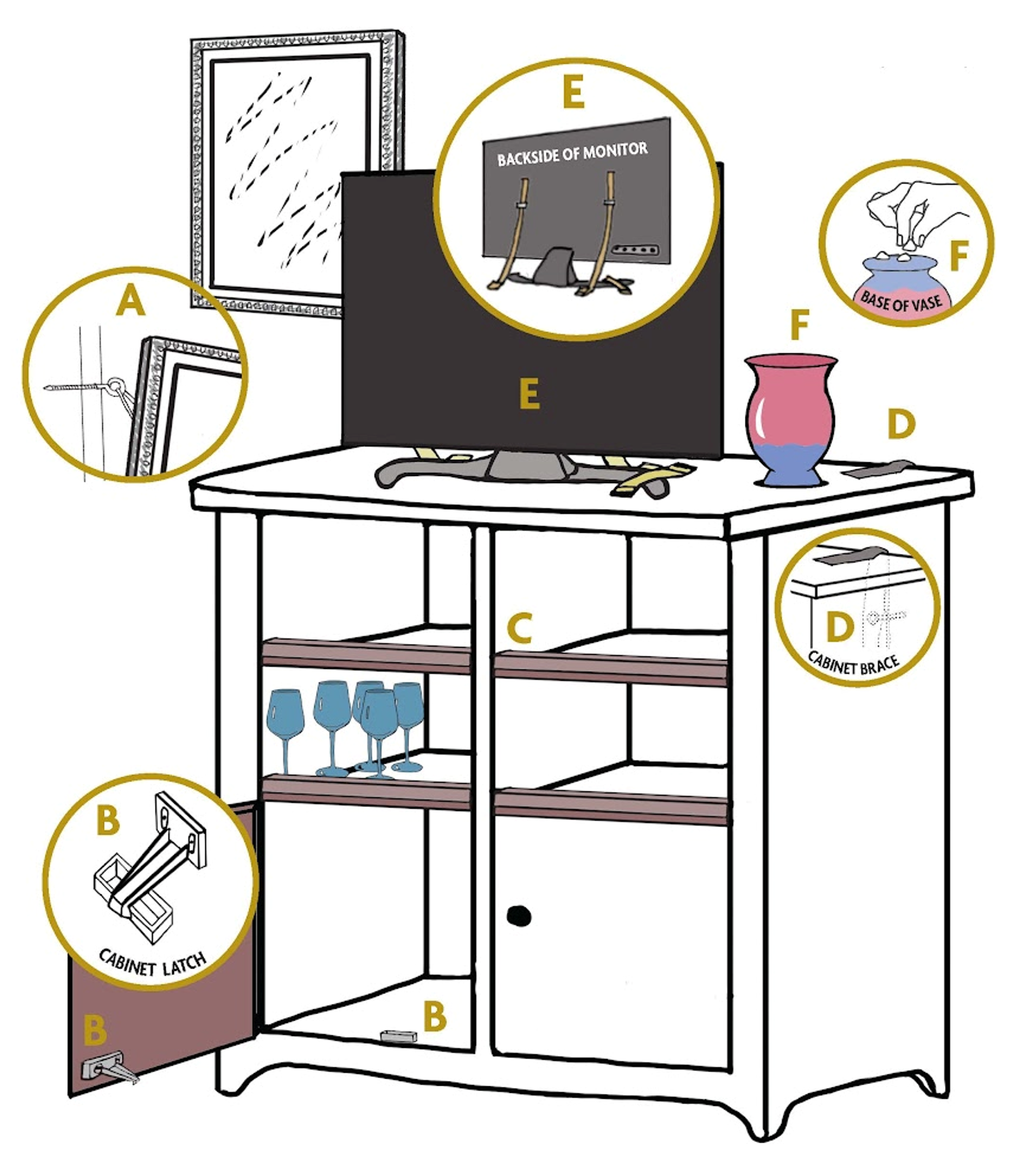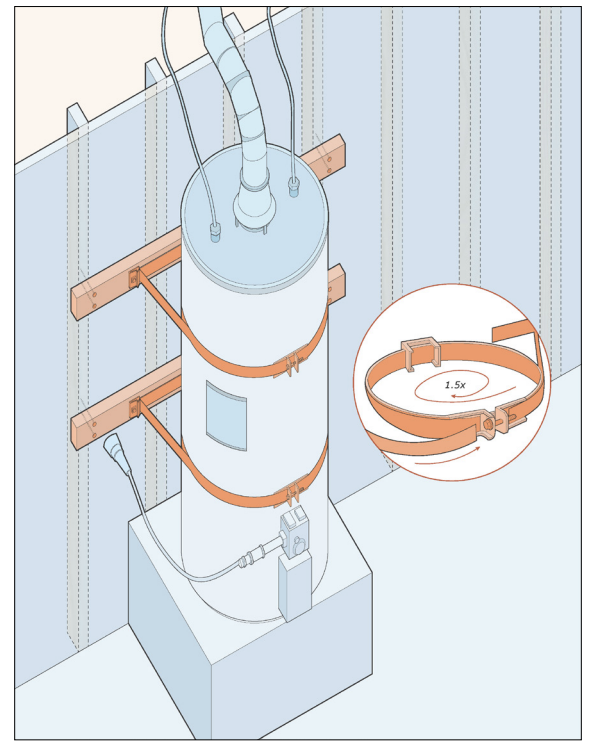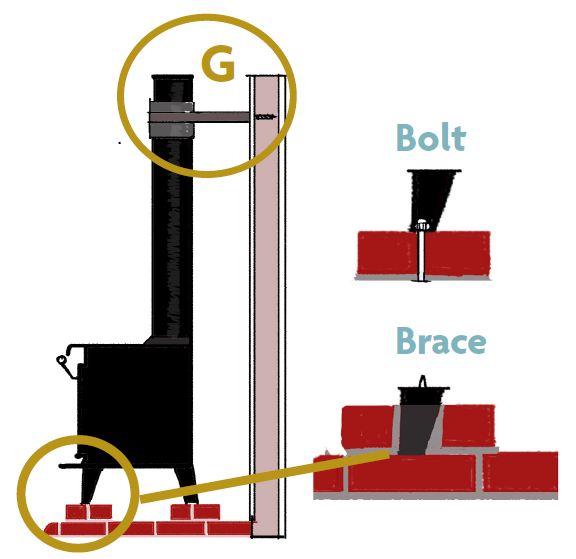Step 1: Know Your Tsunami Zone

Find out if you live, work, or visit in a tsunami zone. Look for the ENTERING and LEAVING Tsunami Zone signs on coastal roads and highways in your area. Go online, visit your county Office of Emergency Services or regional National Weather Service Forecast Office for tsunami maps and brochures.
Secure Your Space
Hanging objects
- Remove or secure hanging plants and heavy objects where people sleep, sit, or spend time.
- Hang mirrors and pictures on closed hooks (A).
- Brace overhead light fixtures.
Kitchens
- Install latches on cabinet doors. Avoid magnetic latches. They will open during strong shaking (B).
- Add lips to open shelving to prevent breakable items from falling (C).
- Secure refrigerators and major appliances.
Use caution when entering kitchens after earthquakes. If dark, use a flashlight. Broken glass, liquids,and fallen items on the floor will make them hazardous.
Furniture
- Store heavy and breakable items on lower shelves.
- Secure tall furniture to wall studs with lag bolts (D).
- Secure dressers, cribs, and infant furniture to wall studs.

Garages and utility rooms
- Move flammable or hazardous materials to low cabinets that are securely latched.
- Secure stored items so they won't fall and block access to doors and vehicles.
- Know how to manually open your garage door.
Home and office electronics
- Secure televisions, computers, sound systems, and other electronics with flexible nylon straps and buckles (E).
Objects on open shelves and tabletops
- Hold small valuables in place with removable putty, museum wax, or quake gel (F).
- Add lips to open shelving to prevent breakable items from falling (C).
- Move heavy objects and KITCHENS breakables to lower shelves.
Above Ground Propane Tanks
Mount tanks on a concrete pad and bolt legs to the pad.
Water and Gas Pipes
- Evaluate, replace, and properly secure rusted or worn pipes.
- Replace rigid gas connections with flexible stainless steel connections.

Water heaters
- Anchor to wall studs or masonry with metal straps and lag screws.
- Install flexible water connectors.

Wood stoves
Wood stoves are heavy and likely to topple or pull away from walls during strong shaking.
- Anchor stove feet by bolting to the floor or creating brick and mortar bracing to keep stove from sliding. Anchors must not conduct heat.
- Brace stove pipes (G).
- Keep fire extinguishers handy and know how to use them.